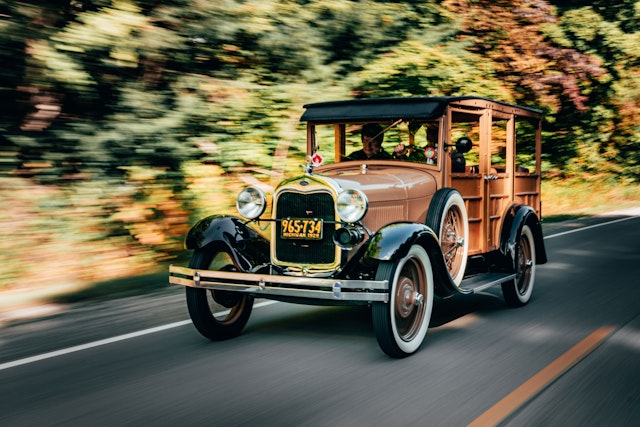How Do I Know If I Have a Classic Car?

When it comes to cars, there are classics, there’s vintage vehicles, and then there are antiques.
Wait … is that the right order? What about cars that are just old? Is this like a Supercharger vs. Turbocharger situation, where they sound similar but are actually quite different? Can a car be a classic and vintage? Antique and still classic? Vintage, but not a collector’s car? All valid questions.
For a simple question about age, there’s a lot to consider. Unfortunately there’s not a lot of agreement about what age car fits into what category, and in a lot of cases it depends on who you ask - a state agency is going to have different rules than a car club or an insurance agency (though we do have some guidelines we’ll discuss).
How Old Does Something Have to be to be Considered Vintage?
There’s a lot of grey area when it comes to vehicle classifications, but most people agree that a “vintage” car is one from the very earliest days of automobile history: it has to be built from between 1919-1930 and remain mostly unmodified (so even though your chopped 20’s-era jalopy or rat rod is very cool, they’re sadly excluded).
Despite this understanding, car clubs like the Antique Automobile Club of America will allow younger vehicles (those above 25 years of age) to participate in their touring events, as does the Vintage Motor Car Club.
The Classic Car Club of America is a bit more strict - but their definitions don’t quite line up with the other ones we’ve outlined. Their list of “approved Full Classics” must be from between 1915-1948 and a “fine” or “distinctive” automobile of high value or top quality at the time of manufacture.
We completely understand opening up “vintage car” clubs to younger vehicles that are technically non-vintage, as there’s much more opportunity to meet and hang out with owners of cars from the 70s and 80s as opposed to the 20s and 30s. It does cause a little bit of confusion, though.
What’s The Difference Between Antique And Vintage Cars?
A general understanding of the range “antique” vehicle age covers both the “vintage” years and those before 1919, often called “the Brass Era” thanks to the prominent use of the metal on vehicle lights (often lanterns), fittings and radiators, though some still refer to vehicles from the time before chrome plating as “horseless carriages.”
Confusing the matter further, every American state has their own rules for what they deem a “historical” vehicle (and eligible for special license plates). For example, at our home offices in Michigan, a car must be 26 or more years old, but if you take that car to our offices in Golden, Colorado, the requirement jumps to 32 years old, but if it’s a “street rod” then it has to be from before 1949, and …
As you can see, it’s a bit complicated.
Are Vehicles from the 1980s Considered Vintage?
Short answer: No.
Longer answer: No, but…
Certainly nothing from the 80’s can be classified as “vintage” but the window for “classic cars” opens up when a vehicle turns 20 years old. That said, it’s hard to argue that your average mid-90s Honda Accord or Ford Taurus is a true classic, or a collector’s item. But could we make an argument here for the Impala SS or the Mitsubishi Eclipse GSX? Now we’re in the ballpark - and you can see how subjective the “classic car” classification can be. Check out Hagerty Valuation Tools which includes car price guide values and real-world vehicle sales results on more than 40,000 different collector cars, trucks, SUVs and motorcycles.
Classic cars also have a high end when it comes to age: Generally no older than 40 years. As before, these vehicles should be largely unmodified.
When all else fails, we turn to Jay Leno’s rules for what makes a car collectible.
Does it have any technical or historical interest or value? Is it fun to drive? Is it visually appealing? Tick those three boxes and you’ve got yourself a collector’s car.
And if the first words out of our mouths when we see your car are “Whoa, nice!” Generally speaking, you’ve got something worth hanging onto there.
How Do I Know If My Car is Valuable?
The only way to find the true value of your vehicle is to sell it. What it sells for is, by nature, its actual value. We’re going to assume that isn’t an option for you, and Hagerty is happy to help ascertain a fair insurable value for your vintage, classic or collectors vehicle.
We have some guidelines that we’ve been working with for years that can help determine what coverage you need for your car, truck, tractor, military vehicle, motorcycle or commercial vehicle. Premiums through Hagerty are up to 27% lower on average than daily driver insurance. Quote here today.
